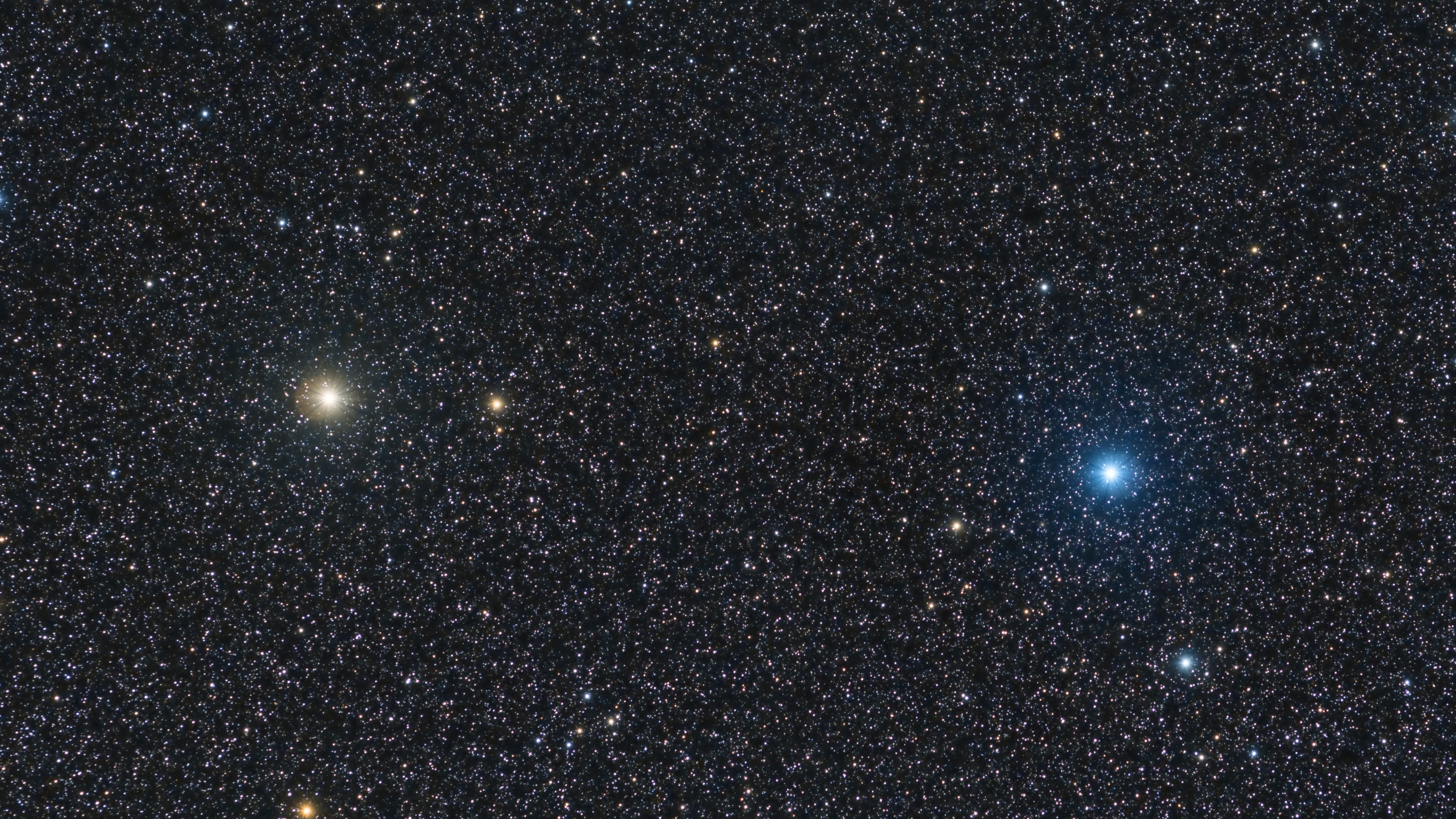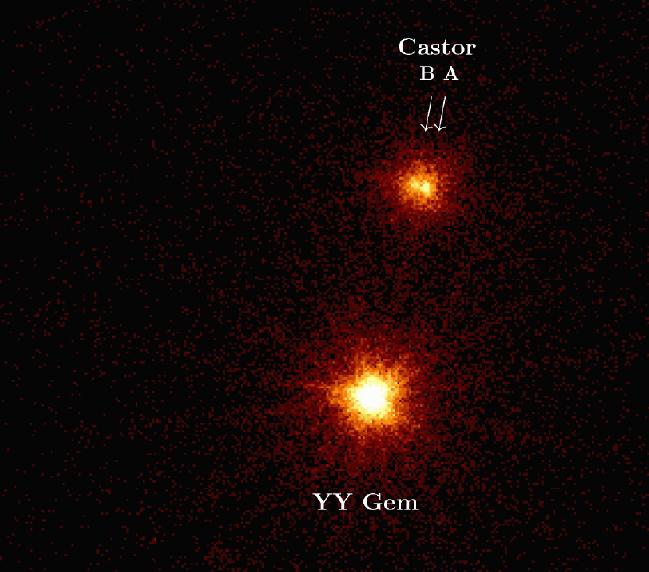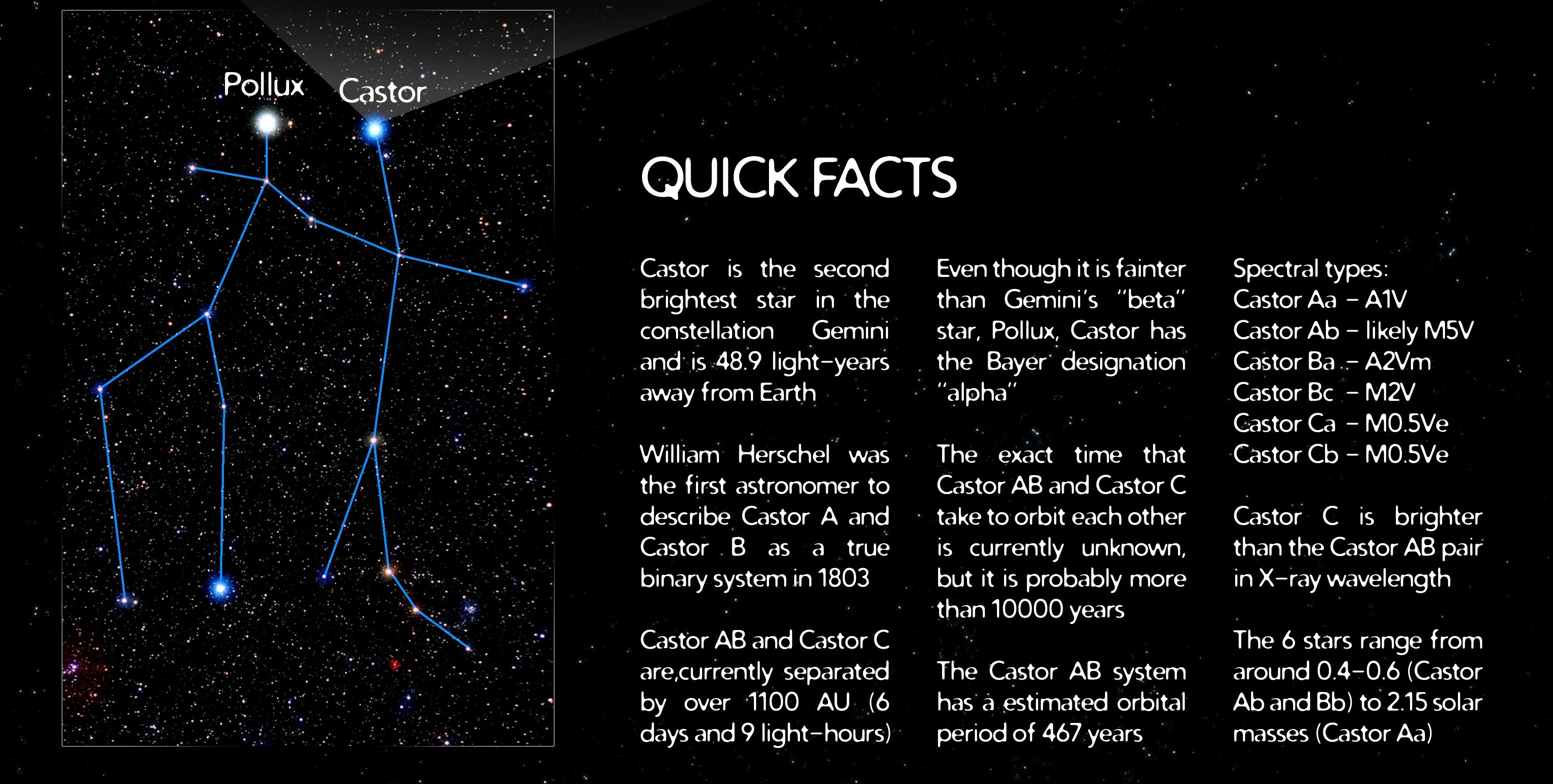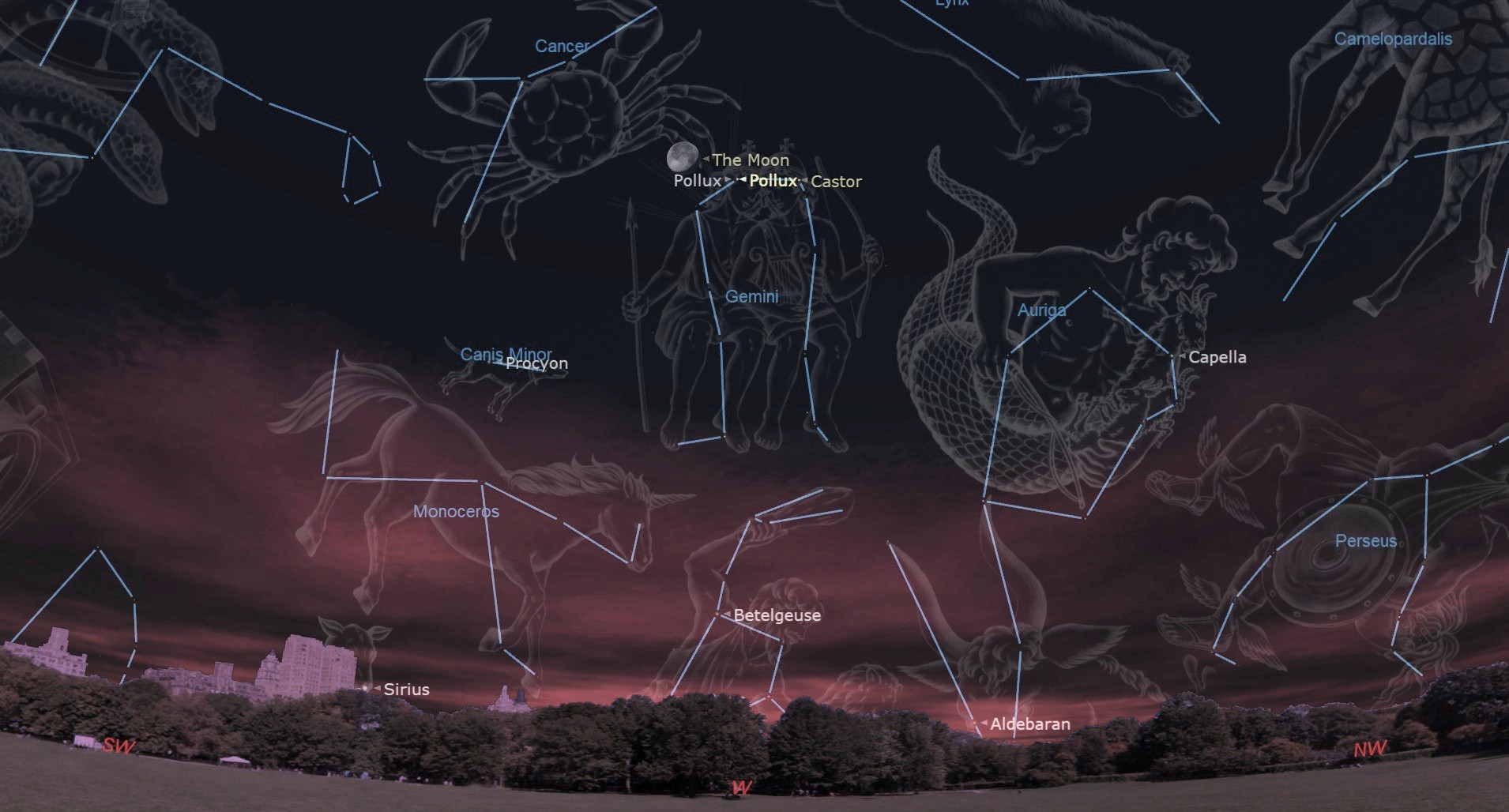Castor: Gemini's six-headed star
Castor, the second-brightest star in the constellation Gemini, is one of the most luminous stars over Earth and a key target for skywatchers, showing there is often much more to stars than meets the eye.

Castor is the second-brightest star in the constellation Gemini. Although it appears as a single star in Earth's night sky to the naked eye, Castor is actually composed of six separate stars in three distinct binary systems about 51 light-years from Earth.
Together as Castor, these stars make up one of the 23 brightest stars in the sky, according to Michigan State University, which cites The Royal Astronomical Society of Canada. The bright-white star forms the head of one of the famous twins of the constellation Gemini. At magnitude 1.58, Castor is the second-brightest star in Gemini. It is also known as Alpha Geminorum, even though the "alpha" designation is normally given to the brightest star in a constellation. Instead, the constellation's brightest star is Pollux (also called Beta Geminorum), which forms the head of Castor's twin brother, Pollux.
When Castor is examined with a good telescope, its hidden nature as a sextuplet of stars begins to reveal itself.
Related: The brightest stars in the sky: A guide
Castor FAQs
What type of star is Castor?
Located around 51 light-years from Earth, Castor, or Alpha Geminorum, is actually made of six stars, which themselves are in three binary pairings. The two main stars of Castor are main-sequence giant blue stars, which, like the sun, are still in the process of burning hydrogen and forming helium, though they are more massive than our star. These stars have fainter red dwarf companions with half the mass of the sun.
What constellation is Castor in?
Castor is the second-brightest star in the constellation Gemini and one of the brightest stars in the sky over Earth.
What is Castor's twin star?
Castor's stellar twin is Pollux, also called Beta (β) Geminorum. Together, they constitute the heads of the twins Castor and Pollux, making up the constellation Gemini. At 33.8 light-years away, Pollux is closer to Earth than Castor is. It is also brighter, with an orange coloration.
The six stars of Castor

Castor comprises six stars in three binary systems, named Castor A, Castor B and Castor C. All of these systems are tightly bound "spectroscopic binaries," meaning they are double-star systems that are too close together for the individual stars to be discerned by a telescope and can only be distinguished as separate stars through observations of the emission and absorption lines in their spectra, according to Star Facts.
All six stars in these binaries — Castor (or Geminorum) Aa, Ab, Ba, Bb, Ca and Cb — are gravitationally bound to each other and share a motion through space.
In 1718, astronomer James Pound was the first to recognize that Castor is made up of more than one star, which he assumed was a double star. Then, William Herschel was the first to describe the brightest two components of Castor, the binaries Castor A and Castor B, in 1803, according to NASA, making this the first true physical binary to be discovered. The binary nature of the third companion of Castor was discovered in 1916.
Castor A and B are separated by 100 times the distance between Earth and the sun and orbit each other about every 450 to 460 Earth years. This element, the Castor C binary system, is much farther from the Castor AB system, at about 1,000 times the separation between Earth and the sun, and is currently believed to take around 14,000 years to orbit the other binaries in Castor.
Castor A
The main, brightest binary of Castor is made up of the stars Castor Aa and Castor Ab, which orbit each other every 9.2 Earth days. Castor Aa is a white-blue dwarf star with a mass 2.8 times that of the sun and a width 2.4 times that of our star. This makes it the second-largest single star in the Castor system. Castor Aa has a surface temperature of 18,055 degrees Fahrenheit (10,013 degrees Celsius), meaning it is much hotter than the sun, whose surface temperature is 10,000 F (5,500 C).
Like the sun, Castor Aa is a main sequence star, which means it is still burning hydrogen in its core to generate helium. Its companion star Castor Ab is much fainter than Castor Aa and is believed to be a red dwarf star with around half the mass of the sun. The Castor A system is estimated to be around 370 million years old, according to Jim Kaler, a professor emeritus of astronomy at the University of Illinois.
Castor B
Castor B, which is around 370 million years old, is made up of a white main-sequence star, Castor Ba, which is orbited by the red dwarf Castor Bb every 2.9 Earth days. At three times more massive than the sun and 3.3 times as wide, Castor Ba is the most massive and largest star in the Castor system. It is surprisingly rich in elements heavier than hydrogen and helium, which astronomers call metals.
Despite its larger size and mass, Castor Ba is cooler than Castor Aa. With an estimated surface temperature of about 15,500 F (8,600 C, it is hotter than the sun. Like Castor Ab, Castor Bb is much fainter than its system's primary star and is estimated to be a red dwarf with half the mass and width of our star.
Castor C
Castro C is an eclipsing binary system, meaning each of its stars eclipses the other regularly and is the faintest of the three Castor binaries. Castor Ca and Cb are believed to orbit each other once every 0.81 Earth days, or 19.5 hours.
Both Castor Ca and Castor Cb are red dwarf stars with masses of around 0.6 times that of the sun and widths around 0.6 times that of our star. As a result, both are cooler and fainter than the sun, with surface temperatures of around 6,400 F (3,500 C). Despite this, the Castor C system is brighter than Castor A or Castor B in X-rays.
Castor C is believed to be younger than Castor AB, at between 30 million and 85 million years old, according to Kaler.
Castor in myth

Both Castor and Pollux, also called the Dioscuri, take their names from Greek and Roman mythology.
Castor was the offspring of Leda, Queen of Sparta, and a mortal King Tyndareus, while Pollux was the son of Leda and Zeus, the father of the gods. Despite having separate fathers, the twins were said to have emerged from a single egg. They shared an exceptional bond, indulging in adventures such as the rescue of Helen of Troy and the quest for the Golden Fleece.
In Greek mythology, when Castor was murdered by Idas and Lynceus, the ex-fiancés of the two women that Pollux and Castor, Pollux's grief was so great, he shared his immortality — granted through his father — with his brother. Eventually, Zeus placed both Pollux and Castor in the heavens as stars and an eternal representation of brotherly love.
How to find Castor in the night sky

Right ascension: 7 hours, 34 minutes, 36 seconds.
Declination: +31 degrees, 53 minutes, 18 seconds.
Gemini is the northernmost constellation of the zodiac, with a right ascension of 07h34m35s and a declination of +31°53'18", according to In-TheSky.org.
To find Castor, first locate the bright star Rigel, which is at the bottom right of the constellation Orion, and then trace an imaginary line through to Betelgeuse at the top left of the same constellation. Follow this line up past Betelgeuse, which will lead through the twin stick figures of Gemini, with Castor being the dimmer of the two stars.
Another way to locate Castor involves finding the Plough asterism in the constellation Ursa Major and using it as a signpost to the Gemini twin stars. Look at the "handle" stars of the Plough and trace a line to the east, and you should land on Pollux and Castor.
Alternatively, find the stars that make up the horns of the constellation Taurus, particularly Aldebaran, and then trace a line from the horns to the west.
Additional resources
Castor is one of the brightest stars over Earth. Here are some of the others detailed by Michigan State University. Read more about the mythology of Pollux and Castor at Britannica. William Herschel was integral to the discovery that Castor comprises more than one binary system. You can read about his astronomical achievements in this biography from the National Center for Atmospheric Research's High Altitude Observatory.
Bibliography
Castor the 6 star system, NASA, [Accessed 12/01/23], [https://d2pn8kiwq2w21t.cloudfront.net/original_images/infographicsuploadsinfographicsfull10884.jpg]
Castor, Star Facts, [Accessed 12/01/23], [https://www.star-facts.com/castor/]
Castor facts, Nine Planets, [Accessed 12/01/23], [https://nineplanets.org/castor-%CE%B1-gem/]
Castor, Britannica, [Accessed 12/01/23], [https://www.britannica.com/place/Castor-star]
Kaler, J. (2017). Stars. University of Illinois. http://stars.astro.illinois.edu/sow/sowlist.html
Tokovinin, A. A. (1997). MSC - a catalogue of physical multiple stars. Astronomy and Astrophysics Supplement Series, 124(1), 75-84.
Join our Space Forums to keep talking space on the latest missions, night sky and more! And if you have a news tip, correction or comment, let us know at: community@space.com.
Get the Space.com Newsletter
Breaking space news, the latest updates on rocket launches, skywatching events and more!

Robert Lea is a science journalist in the U.K. whose articles have been published in Physics World, New Scientist, Astronomy Magazine, All About Space, Newsweek and ZME Science. He also writes about science communication for Elsevier and the European Journal of Physics. Rob holds a bachelor of science degree in physics and astronomy from the U.K.’s Open University. Follow him on Twitter @sciencef1rst.










